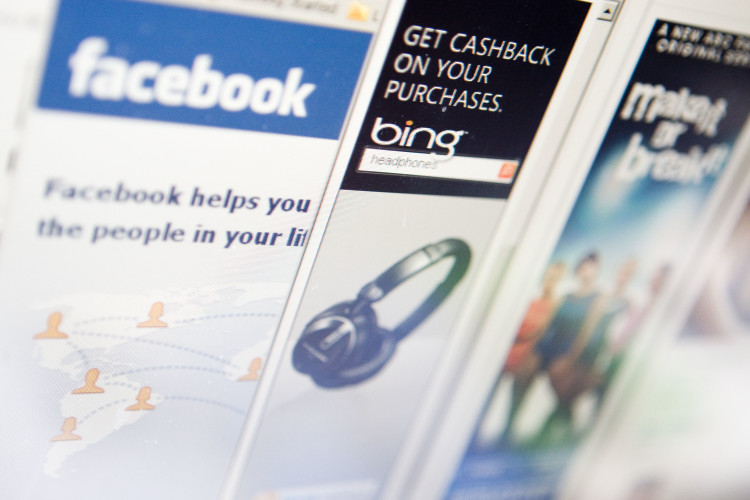Amazon’s Not Facebook, So Tech Investors Exhale: Shira Ovide

published Jul 26, 2018 5:02:11 PM, by Shira Ovide
(Bloomberg Opinion) —
Do you want the good news or the bad about Amazon.com Inc.? They may be one and the same.
In the second quarter, the company interrupted what had been a torrid pace of revenue growth and predicted a slower pace for the third quarter. But profits were positively plump, at least by Amazon’s standards, in signs that relatively higher-margin businesses are becoming bigger chunks of Amazon’s total sales and that the free-spending company may have gone on something of a diet.
What Amazon delivered wasn’t exactly a reprieve for the U.S. tech superpowers after Facebook’s quarterly face plant. After all, investors have gravitated to companies like Amazon and Facebook for their incredible growth rates and firm hold on lucrative areas of the economy. Amazon didn’t deliver on the growth front, but its profits and its pace of revenue in the right places may be enough to calm the stormy big tech seas.
Amazon said Thursday that its revenue rose 39 percent from the second quarter of 2017 — a figure that fell shy of Wall Street forecasts but was nearly dead center of the company’s own prediction. Excluding sales from Whole Foods, which Amazon didn’t own at this point last year, the revenue growth rate was even lower, perhaps around 29 percent. Amazon’s forecast for the third quarter predicted an even slower rate of revenue gains, including an expected sting of foreign-currency swings. (Facebook also blamed currency swings in part for its meek revenue growth forecast.) The number of individual items sold on Amazon rose 17 percent, a sharp slowdown in growth from prior quarters.
That’s not bullish, but there were happier growth surprises if you dug deeper. Amazon’s cloud-computing operation, Amazon Web Services, posted a 49 percent jump in revenue and now accounts for 11.5 percent of the company’s total sales. Revenue more than doubled in a category that includes Amazon’s digital advertising business — a relatively new operation that has excited stock analysts. As the relatively high-margin advertising and AWS businesses generate larger slices of Amazon’s total sales, it has the effect of lifting Amazon’s profit margins.
Those are happy spots of growth in a report that otherwise fell short of optimistic hopes. The question is how much Amazon investors will be bothered by this. Investors are eager to own shares in fast-growing tech companies, but they are quick to turn on them if growth falters. That was in part what happened to Facebook this week, and Netflix Inc. the week before. The investor whiplash can be particularly acute if the fast-growing company, like Amazon or Netflix, has skimpy profits at the same time its sales growth is easing.
But Amazon investors can be comforted by the company’s surprisingly strong margins. In the segment that includes Amazon’s U.S. e-commerce business, the operating profit margin of 5.7 percent was the plumpest in some time. Its forecast for the third quarter implies another strong period for margins.
Sales from Whole Foods and the growing share of sales from AWS and advertising are helping, but it’s also clear that Amazon is keeping a closer watch on its costs. Particularly notable was Amazon’s costs to buy products that it resells, packaging supplies and other basic expenses to run its business. That cost of sales, expressed as a percentage of Amazon’s revenue, was the lowest in years.
Amazon Web Services also posted its fattest operating margin since the segment started reporting its financials in 2015. Amazon’s spending also markedly slowed for big-ticket projects such as its package warehouses and computer data centers. Typically Amazon’s spending dials up in the third quarter to prepare for the holiday rush, but the company said it wouldn’t expand its warehouse network quite as quickly as it did in the last couple of years.
Amazon’s stock price rose about 4 percent in after-hours trading on Thursday, as stock watchers decided to fixate on the profit good news.
Investors have been expecting Amazon to finally deliver fat profits after years of skimpy ones — and they have believed Amazon could keep defying gravity by continuing to grow faster than nearly all companies with $200 billion or more of annual revenue. Amazon shows signs of delivering on the profit front, but at the same time the growth may be weaker than optimists expected. Whether that’s good or bad news is in the eye of beholder.
For more columns from Bloomberg View, visit Bloomberg view
copyright
© 2018 Bloomberg L.



No Comment